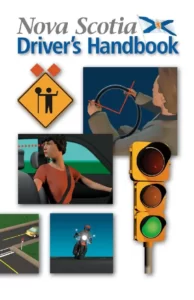NOVA SCOTIA MOTORCYCLE PRACTICE TEST 2023
In Nova Scotia, like in most provinces of Canada, there is a graduated motorcycle licensing system. Here are the typical stages:
Learner’s Permit (Class 6N): This is the first step and allows you to practice riding a motorcycle under certain restrictions. You’ll need to pass a written test that covers road rules and motorcycle-specific information. You’ll also need to take an eye test.
Novice Stage (Class 8N): Once you have your learner’s permit, you can practice riding on the road, but you’ll still have some restrictions. You must display an “L” sign on the back of your motorcycle and are not allowed to carry passengers or drive on high-speed roads.
Road Test: To advance to the next stage, you’ll need to pass a road test. This test evaluates your riding skills and how well you follow traffic rules. If you pass, you’ll move on to the next stage.
Restricted Motorcycle License (Class 6R): At this stage, you have fewer restrictions but are still not allowed to carry passengers. After a specific period, you can take another road test to advance to the next stage.
Full Motorcycle License (Class 6): Once you pass the final road test, you’ll obtain a full motorcycle license, allowing you to ride without the previous restrictions.
Keep in mind that the details of the licensing process may vary, and it’s important to consult the official website of the Nova Scotia Department of Transportation or a local licensing office for the most accurate and up-to-date information.
Frequently Asked Questions about Nova Scotia motorcycle Practice Test Online
The Nova Scotia motorcycle test is a practical examination that assesses your skills and knowledge as a motorcycle rider. It’s designed to ensure that you can safely operate a motorcycle on the road.
Yes, if you’re planning to ride a motorcycle on public roads in Nova Scotia, you need to pass the motorcycle test to obtain a motorcycle license or endorsement.
There are usually two types of motorcycle tests: a written knowledge test and a practical riding test. The written test assesses your understanding of road rules and safety regulations, while the riding test evaluates your actual riding skills.
The process generally involves:
- Passing a written knowledge test that covers motorcycle laws, rules of the road, and safety practices.
- Completing a motorcycle training course (recommended but not always required).
- Passing a practical riding test where you demonstrate your motorcycle handling skills.
You can prepare for the written test by studying the Nova Scotia Driver’s Handbook and the specific motorcycle section. The handbook covers important rules, regulations, and safety practices for motorcyclists.
- The first step is to thoroughly study the official Nova Scotia Motorcycle Handbook. This handbook contains all the information you need to know about rules of the road, safety guidelines, and other important topics. Make sure to understand the content and familiarize yourself with the rules and regulations specific to Nova Scotia.
- Motorcycle riding skills require practice. Spend time riding in various road and traffic conditions to build your confidence and improve your riding abilities. Practice maneuvers such as braking, turning, and shifting gears in a safe environment. Consider taking a motorcycle safety course, as it will provide structured training and allow you to practice under the guidance of experienced instructors.
- The test will likely include various maneuvers such as figure eights, U-turns, quick stops, and swerves. Practice these maneuvers until you can perform them smoothly and confidently. Focus on maintaining balance, using proper technique, and looking where you want to go.
- Safe motorcycle riding involves a high level of situational awareness. Practice scanning the road ahead, checking your mirrors frequently, and anticipating potential hazards. Understand proper lane positioning and the importance of maintaining a safe following distance from other vehicles.
- Review the specific requirements of the Nova Scotia motorcycle test, including the different stages and specific skills being evaluated. Set up practice scenarios that mimic the test conditions. For example, simulate the on-road portion of the test by riding in traffic, adhering to road signs and signals, and making safe lane changes.

